Kayla Malouin is the Curator of the Caproni Collection at the Giust Gallery in Woburn, Massachusetts, USA.
At the Giust Gallery in Massachusetts, our plaster cast of Michelangelo’s head of David is dear to us. It rests on its own pedestal just beyond the Gallery’s narrow entrance and, if viewed from the doorway, it is somewhat obscured by a row of busts. Most people do not notice the head until they have come in and turned around, and when they do, we are always excited by the viewer’s sudden awe.
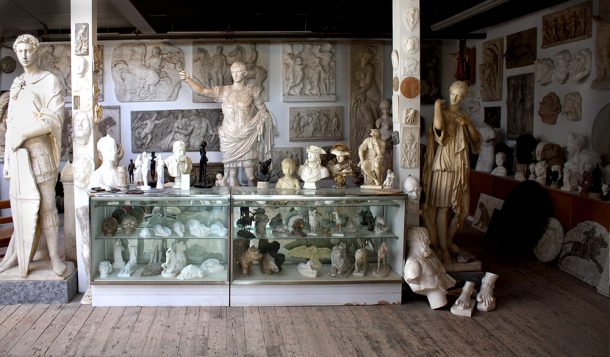
We at the Giust Gallery produce and sell plaster reproductions of famous sculptures. Every piece is made in-house and by-hand. The pieces we produce were first offered by P.P. Caproni & Brother, two Italian brothers, starting in the 1890s as a way to bring sculpture from around the world to the homes and schools of the American public. Our company, originally based in Boston, changed hands over the years and was finally acquired by Robert and Kathleen Shure in the 1990s and later moved to nearby Woburn, Massachusetts. All antique Caproni casts have one of several versions of metal emblems embedded on the back or bottom with the company’s information. Starting in the 1960s when the name changed to the Giust Gallery, the company began using a stamp instead which we continue to use today. The Capronis through to the Shures identify the casts in this way to signal the pieces’ provenance and quality. Our plaster copies are exceptionally close in detail to the original sculptures, since the Caproni brothers made piece molds off of these sculptures directly – which is unheard of today! – and created plaster casts. These now-antique casts comprise our Caproni Collection. Whenever we need to renew a mold, we mold off the antique, or first-generation, cast. Our casts are purchased by school and university art departments, art students, interior designers, museums, and collectors. We take pride in our history and in the quality of the casts we produce. Below is a video we created recently that shows us casting a bust of David.
The Giust Gallery creating a bust of David in 2016.
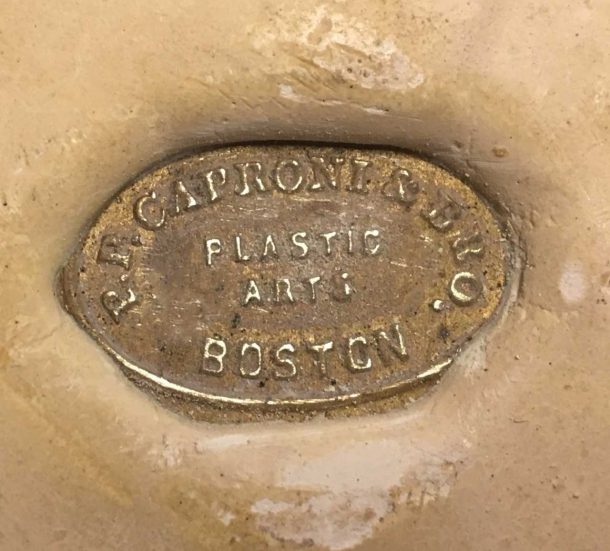
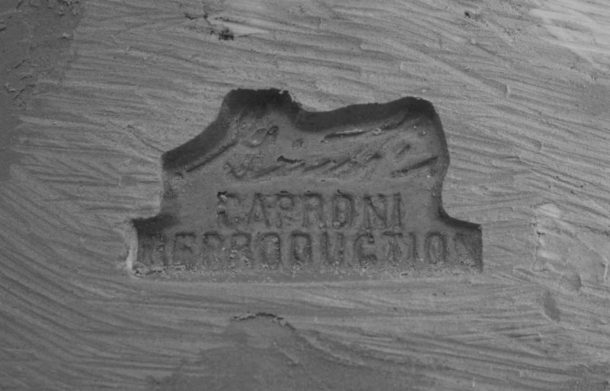
In addition to producing casts, many museums and galleries come to us for restoration and conservation of their antique plaster casts or entire plaster cast collection due to our knowledge base. One institution we have worked with extensively is the Pennsylvania Academy of the Fine Arts. Located in Philadelphia, Pennsylvania, the Academy is an art school with a historic collection of plaster casts that were bought early on in the school’s founding for study. Collaborating with Al Gury, the Chair of the Painting Department, we have evaluated and restored over 100 of their plaster casts. Many of them are Caproni plasters which is a real treat for us, especially since restoring a cast means being able to spend hours studying and learning about the piece.
Restoration and conservation projects for plasters might include: touching-up some unstable paint, re-patinating the piece, re-sculpting a missing finger, reattaching broken parts, and securing and filling any fractures. The principal rules for keeping a piece in good condition are to simply dust it with a dry, soft cloth periodically and keep it in a cool, dry place because moisture harms plaster. Dusting is highly preferred to painting over dirt or dust – layers of paint obscure detail and so we’ve often had to remove old paint during restorations. Accumulation of dust and ingrained dirt over time needs to be removed by a conservator. It is important to us that antique casts and newly created ones are kept safe and clean so they can continue to wow viewers with their detail.
Returning to Michelangelo’s David, P.P. Caproni & Brother started offering plaster casts of it with their first catalog issued in 1894. Although this catalog only presented David’s facial features, the company would eventually add other casts from the sculpture to their collection. Some of the facial features in this catalog were offered in various sizes, like the left ear and the right eye. Today, we continue to offer full-size casts of the nose, mouth, left ear, and both eyes. We have at least one first-generation cast of each. The facial features are extremely popular with art students and schools for their size and level of detail, as well as with collectors as a way to creatively decorate a space.
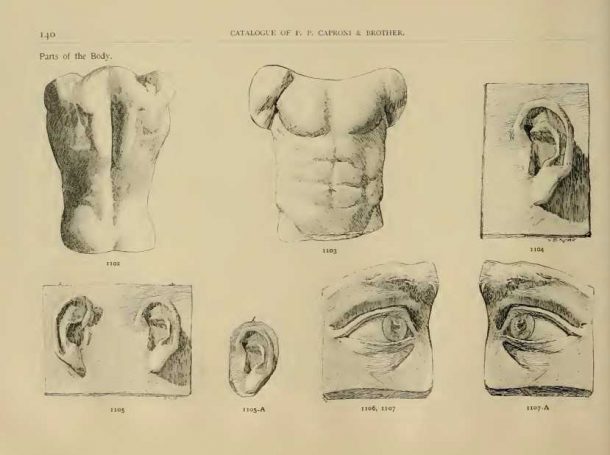
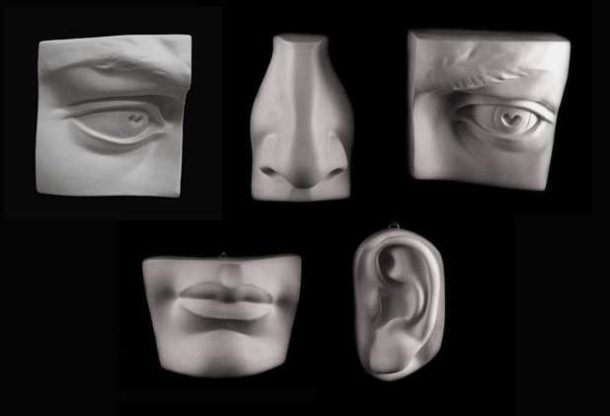
In 1901, a reduction of the full figure of David was first made available. This cast might have been a sculpted reduction, which Caproni often did with other pieces, in order to offer for sale a more affordable version of the David. We still have a cast of this piece that is not yet listed on our website.
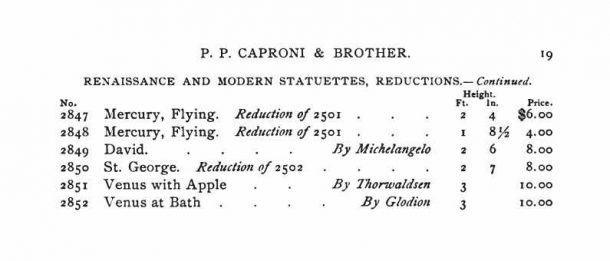
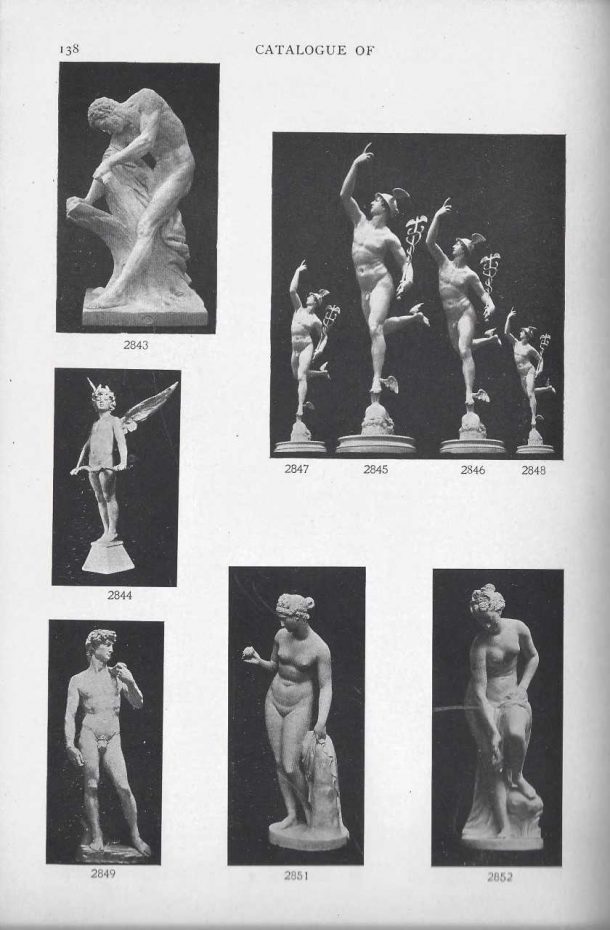
The same catalog also featured a cast of the bust of David at its original size. The David head we hold in our collection today is likely a later casting. We enjoy pointing out to visitors that if they look under the curls on his forehead, one can see the marks left by Michelangelo’s drills. P.P. Caproni & Brother never altered the casts that came out of the molds they made; they desired to create authentic castings.
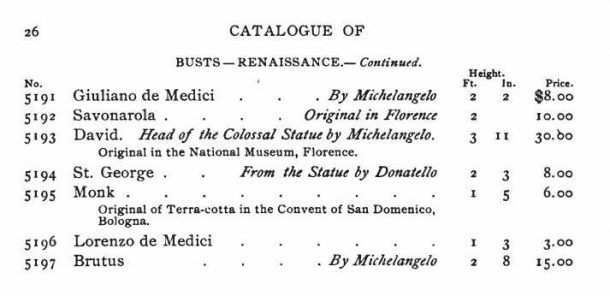
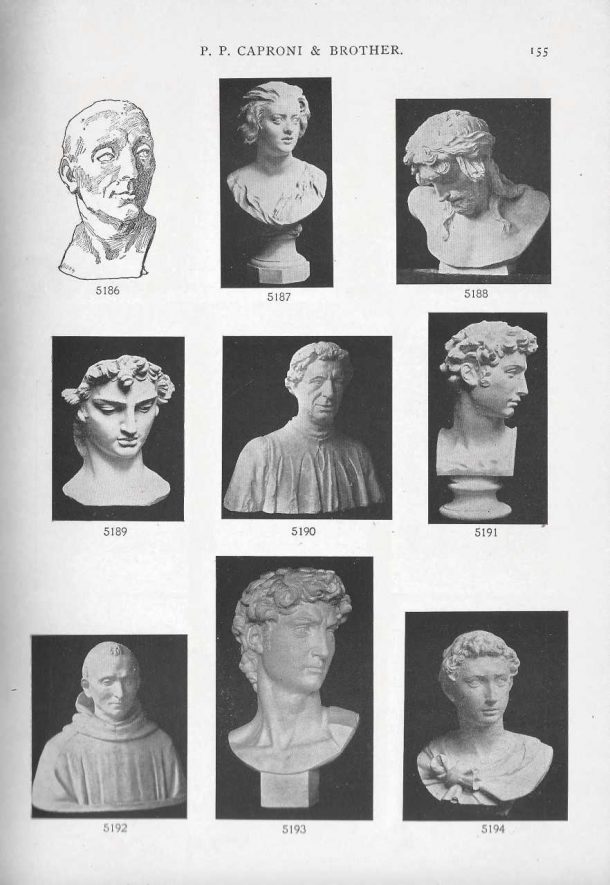
A mystery surrounds the history of our head of David. Much to our chagrin, most of the Caproni-era records were destroyed in a fire in the 1940s. Some molds and casts were destroyed as well, and others were lost in the years between P.P. Caproni’s death in 1928 and the 1960s. As a result, the collection today is not as large as it once was, but we continue looking for Caproni casts to add back into our collection. For example, we recently were able to acquire the right eye of David. Information for the years between the 1960s and the 1990s is also lacking. The 1960s welcomed new owner Lino Giust, himself a craftsman from Italy like his predecessors. He did not maintain many records, leaving us without much information on molds, casts, or old sales. Thankfully, copies of the Caproni and Giust product catalogs have survived. Some were passed down to us while others were bought from antique booksellers.
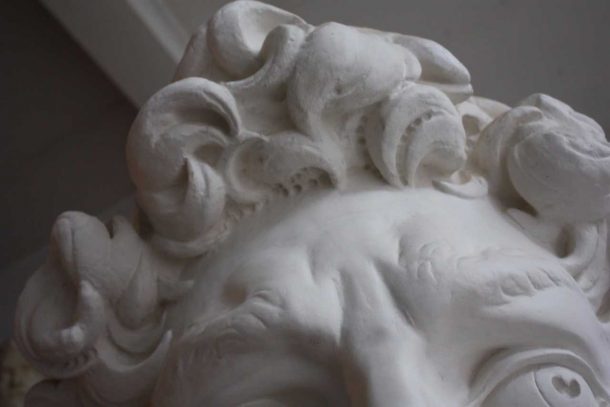
When we bought the collection in 1992, we acquired the mold for and a cast of the head of David. Lino Giust said he found and molded a first-generation cast of the head since it was no longer in the collection and he wanted to replace it. The mold was made of latex rubber. The first cast he made from the mold during the 1960s is what is in our collection. On the underside of the cast is the Giust Gallery stamp, initiated by Lino Giust. It is a very accurate and crisp copy of the original head of David. When in close proximity, we can see highly-detailed creases around his eyes and fine lines in his eyebrows, and the overall form matches closely to the original head in Florence. This faithfulness to the marble has led us to believe that the mold that created it was taken, as Giust said, from a first-generation cast. Definitive information on the David head and some of our other casts would be wonderful, but, as with so much history, stories are sometimes speculated and we must act as detectives.
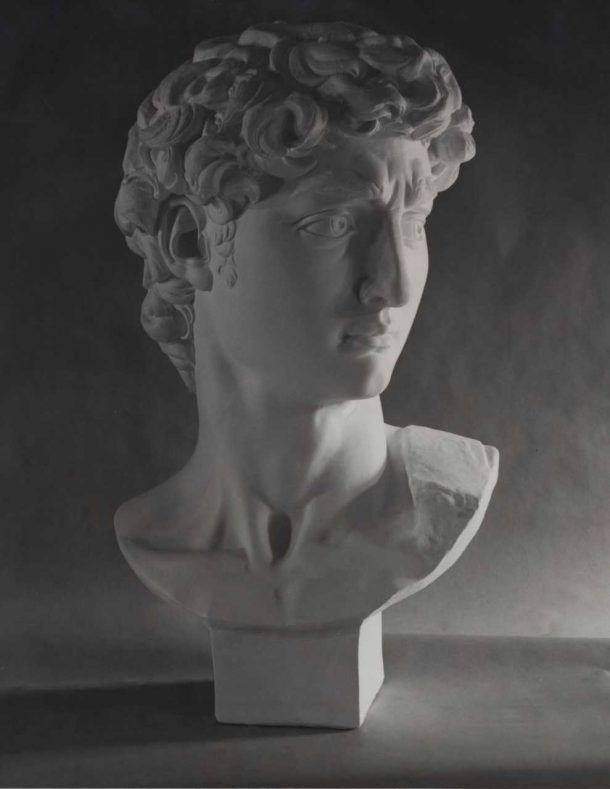
We treasure the pieces we possess from Michelangelo’s famed statue of David. For us and our customers, being able to touch and observe the head and its features so closely is quite a remarkable experience. We can hold the facial feature casts in our hands and study them at every angle and feel the shapes. Touching the bust’s hair, veins, and collarbone would be impossible to do to the real statue in the Accademia Gallery! With these plaster casts, one can get up close and personal to the work of a master.
As for us here at the Giust Gallery, we will continue walking past the bust of David every day. Sometimes we may take his presence for granted considering he’s always there and we’re so busy, but at other times we stop, walk up close, and marvel at Michelangelo’s David face-to-face.
Kayla Malouin is the Curator of the Caproni Collection at the Giust Gallery in Woburn, Massachusetts, USA.
Kayla Malouin joined the Giust Gallery team in the summer of 2010 as an intern following her graduation from Wheaton College in Norton, Massachusetts where she majored in Art History. At the Gallery, she was introduced to mold-making, casting, and the finishing of plaster reproductions, and she also took orders and answered customers’ questions. She became a part-time employee that fall, and started graduate school a few months later. She was a student of Johns Hopkins University’s distance-learning program. She completed her Master’s Degree in Museum Studies a couple of years later and started working full-time at the Gallery. Her interest in the Gallery and its historic plaster cast collection had grown by then, and she started to inventory and catalog the collection for the first time in its history. The owners of the Giust Gallery, Robert and Kathleen Shure, have always been supportive of Kayla. Considering her passion for collections management and museum studies, they had decided to start their long-awaited project of cataloging the collection and utilizing a database. When the Shures and Kayla decided to devote more time to this large project and others, she was named Curator of the Caproni Collection. It has been an exciting journey and she’s thrilled to be playing a role in preserving this historic collection.



Hey, thanks for such a great article, quite a good read :)
Excellent Guest post. I loved this whole article and thanks for posting this.
I never saw before that video on the beggining of this article, was very interesting :)
Thank you to such an extent! Such a respect! A debt of gratitude is in order for having this site
Thanks for sharing. I seek it will be useful after excessively numerous individuals that are looking for this theme.
Excellent Guest post. I loved this whole article and thanks for posting this.
I feel it interesting, your post gave me a new perspective! I have read many other articles about the same topic, but your article convinced me! I hope you continue to have high quality articles like this to share with veryone!
Nice post!! Thanks for sharing with us.
Happy Birthday Wishes In Telugu
Very informative post. Appreciate your work
Very informative post. Appreciate your work
hey thank for dis post
hmm nice poost thank for sharingx
thank for sharing lovely post
Thank for sharingx
Nice collection, thanks for sharing with us.
Interesting that you have preserved so much. Thanks for sharing such in-depth information.
Great Article. Thanks for sharing valuable information. Keep Posting.